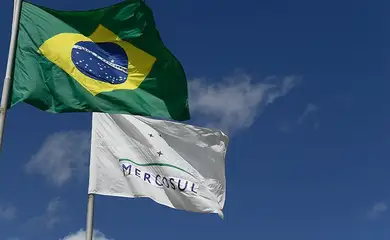Banks commit $10 bi for South American integration

Major development banks, including Brazil's National Bank for Economic and Social Development (BNDES), the Development Bank of Latin America (CAF), the Inter-American Development Bank (IDB), and the Financial Fund for the Development of the River Plate Basin (Fonplata), will invest approximately $10 billion in South American integration projects.

On Thursday (Dec. 7), at the Mercosur Summit hosted at the Museum of Tomorrow in Rio de Janeiro, the unveiling of the initiative named "Routes for Integration" took place. This project envisions establishing a minimum of five connection networks across the continent, with the goal of fostering the development of infrastructure, trade, and strategic exchanges within the region.
The event was attended by President Luiz Inácio Lula da Silva, the presidents of Bolivia, Luis Arce and Paraguay, Santiago Peña, leaders of development banks, and Brazilian ministers."
The main routes so far are Guiana Island (northern Brazil with Guyana, French Guiana, Suriname, and Venezuela); Manta-Manaus (northern Brazil with Colombia, Ecuador, and Peru); Rondon Quadrant (Acre, Mato Grosso, Rondônia, Bolivia, and Peru); Capricorn (Mato Grosso do Sul, Paraná, Santa Catarina, Argentina, Chile, and Paraguay); and Porto-Alegre-Coquimbo (Rio Grande do Sul, Argentina, Chile, and Uruguay).
"For five months, we engaged with representatives from all of Brazil's border states—covering finance, labor, culture, and planning. We also held discussions with state ministers from neighboring countries and achieved a consensus. This collaborative effort led to the formulation of a new integration pact. There is a real possibility that these routes will be completed by 2026. All the routes on the Brazilian side have already been secured, and we've established contact with at least 124 projects linked to these routes within Brazil's Growth Acceleration Program," explained Tebet.
According to BNDES head Aloizio Mercadante, given Brazil's relations with other neighbors and the volume of business, the most logical way forward on the continent is to invest efforts and resources in joint development.
"Brazil's exports to South America total $35.2 billion, compared to $28.7 billion for the United States," emphasized Mercadante. He highlighted, "That's why it makes sense to have more logistics, roads, railroads, bridges, energy integration, fiber optics, services, tourism, jobs and income for everyone. A more unified South America equates to increased diplomatic strength, enabling us to play a more influential role in international affairs."




